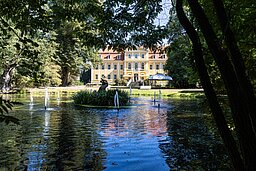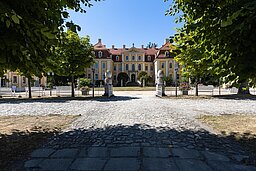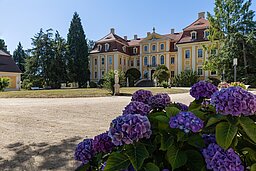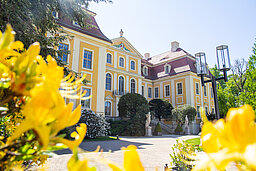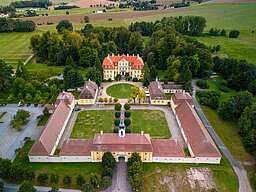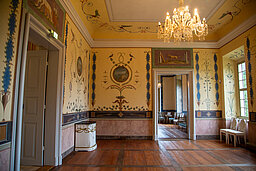

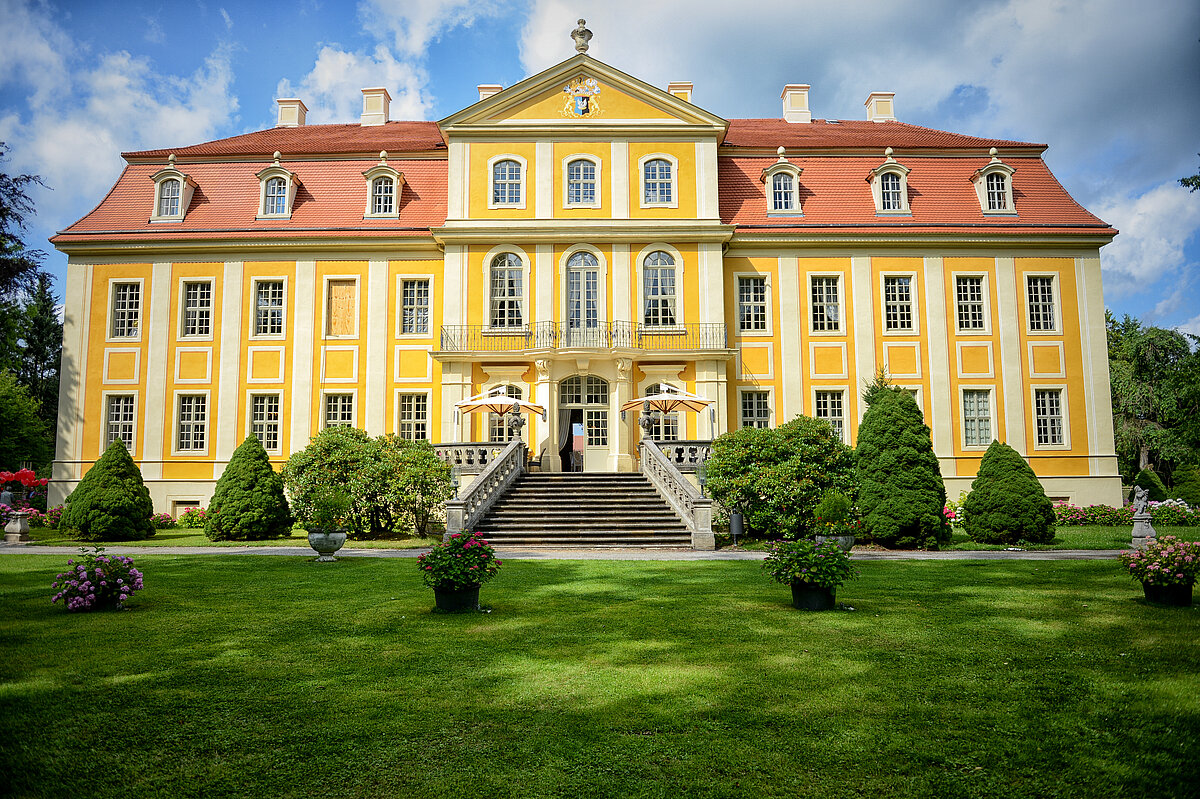
In addition to the Baroque architectural style, a tour of the historic rooms of Rammenau Baroque Palace also reveals numerous influences of Classicism. The Devil's Room and the Bulgarian Room on the Beletage bear witness to the partial redesign at the end of the 18th century. A permanent exhibition also provides information about the 300-year history of the castle and its owners.
April to October, daily 10 am to 6 pm; November to March by appointment
By car: Take the A4 to the Burkau exit. Follow the B98 to Rammenau, then follow the signs.
Public transportation: Take a train to Bischofswerda. From there, take a bus or cab to Rammenau.
In 1764, the Prussian cavalry captain Friedrich von Kleist acquired the baroque Rammenau Castle from his brother-in-law as a summer residence. He is probably largely responsible for the classicist redesign of the interior, which still delights visitors to the castle today. The Devil's Room with depictions from Greek mythology and the Peacock Room decorated with idealized antique landscape paintings date from around 1800.
One of the most magnificent examples of Baroque interior design is the Chinese Room with its precious paintings on canvas, which sometimes make the viewer smile. The depictions, which were probably created by a Saxon court painter around 1730, sometimes show a white and brown “dog emperor” enthroned on a carriage and sometimes an elephant with human ears and legs like a bear. Although the Red Army had already prepared the valuable paintings for transportation in 1946, they were saved and returned to their place in the palace. Like the other rooms in the castle, they have been extensively restored in recent years.
The Chinese Room, which expresses the desire of the landed gentry to keep up with the Dresden court, is one of the many highlights on a tour of the fully preserved manor house and the newly designed permanent exhibition, which will open in mid-2025. This will not only focus on around 300 years of castle history, but will also establish a connection between manorial living on the one hand and the life and work of the servants on the other. For the first time, the Meierhof, which is surrounded by farm buildings and the gatehouse, will also be included in the exhibition. Also in mid-2025, the magnificent Hall of Mirrors will once again provide a magnificent backdrop for weddings and classical concerts.
Visitors will also encounter the philosopher Johann Gottlieb Fichte time and again, both in the castle and in the parish garden. Born in Rammenau in 1762 as the son of a linen weaver, he was discovered in the castle by his later patron, who enabled him to pursue an academic career.
